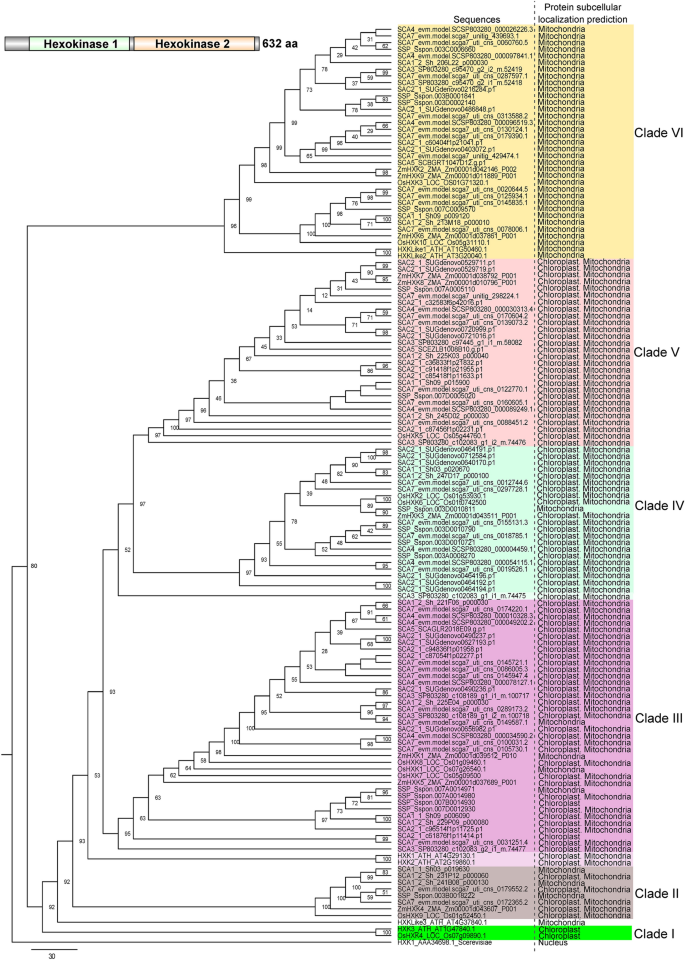Sugarcane is a remarkable crop that can store up to 42% of its dry weight as sucrose, making it a vital source of sugar and biofuel. However, the complex mechanisms that regulate this impressive sugar accumulation are not fully understood. In a groundbreaking study, researchers have delved deep into the intricate world of sugarcane’s sugar signaling pathways, unveiling novel insights that could pave the way for enhancing crop productivity and sustainability.
The study, led by a team of scientists from the University of São Paulo, focused on three master regulators of plant metabolism: the proteinkinase’>Sucrose Non-Fermenting 1-Related Protein Kinase (SnRK1), and the Hexokinase (HXK). These pivotal enzymes and complexes act as sensors, integrating various environmental and metabolic cues to fine-tune the plant’s growth, development, and carbon partitioning.
Unraveling the Sugarcane Sugar Sensing Mechanisms
The researchers employed a comprehensive bioinformatic approach to identify and analyze the sequences of these key sugar regulators in sugarcane. They combed through publicly available transcriptomic and genomic datasets, painstakingly piecing together the puzzle of sugarcane’s sugar signaling pathways.

TOR Complex: The team discovered a remarkable diversity of TOR-related sequences in sugarcane, reflecting the complexity of this crucial regulator. They found that most of these sequences shared a common ancestry with the three main Saccharum species – spontaneum’>Saccharum spontaneum, and thaliana’>Arabidopsis. This suggests that SnRK1 may play a multifaceted role in regulating sugarcane’s complex metabolism and adaptation to its environment.
Hexokinase: The team’s analysis revealed a remarkable diversity of HXK sequences in sugarcane, with the identification of 98 distinct HXK and 14 HXK-like proteins. These enzymes were classified into five distinct clades, each potentially harboring unique functions in sugar sensing and metabolism.

Uncovering the Dynamics of Hexokinase Activity
To better understand the role of HXK in sugarcane’s growth and development, the researchers conducted a detailed analysis of HXK enzymatic activity in different plant organs throughout the crop’s lifecycle. They found that HXK activity was highest in the sugarcane culms (stems) during the first month of growth, a critical period when the plant is establishing itself and requires a steady supply of energy and nutrients.

This surge in HXK activity likely reflects the culm’s transition from a sink (consumer) to a source (producer) of carbohydrates, providing the necessary fuel for the plant’s initial development. As the plant matures, the HXK activity in the culms decreases, while the leaves maintain a more consistent level of HXK, underscoring the dynamic and organ-specific nature of sugar regulation in sugarcane.
Implications and Future Directions
The findings of this study have far-reaching implications for the understanding and optimization of sugarcane productivity. By unraveling the complex web of sugar sensing mechanisms, the researchers have laid the groundwork for future investigations into the precise roles of TOR, SnRK1, and HXK in regulating carbon partitioning, growth, and stress responses in this vital bioenergy crop.

Potential Applications:
– Developing strategies to enhance sucrose accumulation in sugarcane culms through targeted manipulation of sugar signaling pathways
– Improving sugarcane’s resilience to environmental stresses by fine-tuning the activity of key metabolic regulators
– Exploring the use of sugarcane as a model system to study the intricate interplay between sugar sensing, growth, and development in polyploid crops
As the world faces the challenges of climate change and the growing demand for sustainable energy sources, this research provides a valuable foundation for unlocking the full potential of sugarcane, a crop that holds the keys to a sweeter, more sustainable future.
Author credit: This article is based on research by Lauana Pereira de Oliveira, João Pedro de Jesus Pereira, Bruno Viana Navarro, Marina C. M. Martins, Diego Mauricio Riaño-Pachón, Marcos Silveira Buckeridge.
For More Related Articles Click Here
